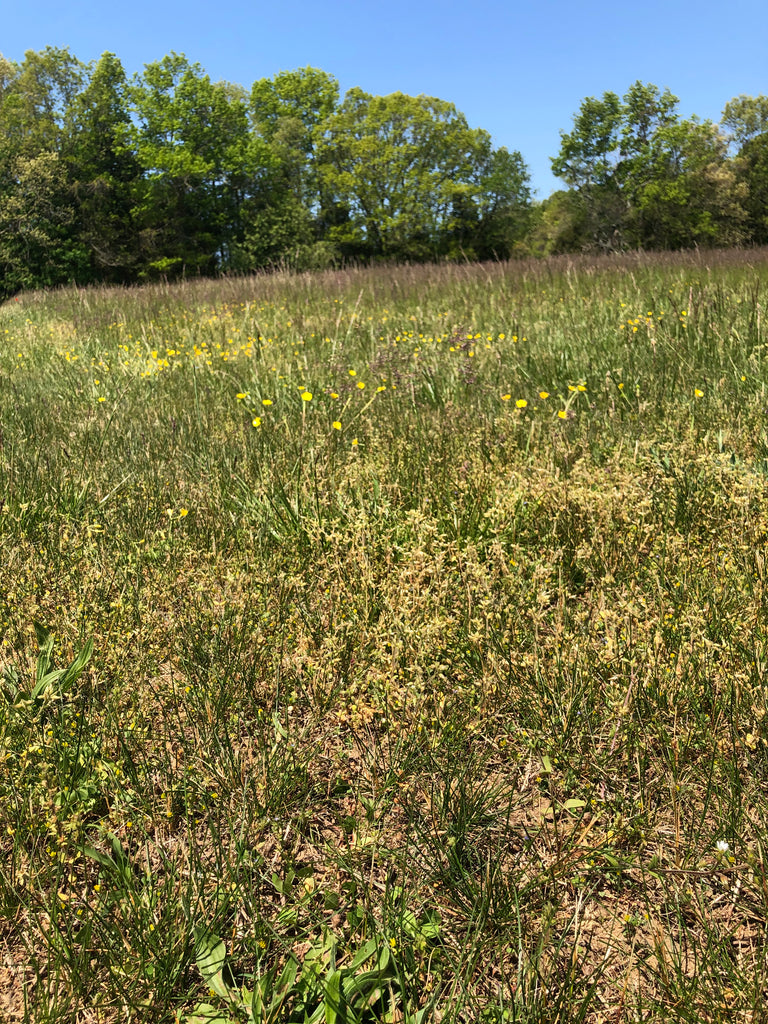Natural Dyes Design Inspirations
Friends, this spring and summer I went deep down some rabbit holes learning about nature. I had a chance to visit this big meadow in New Jersey regularly, as all the trees and undergrowth around the meadow's edge grew leaves, flowers, and fruits. I would take the baby for long walks around the meadow, checking on all the green things (just like Annicke Mouse inspecting her trail trinkets), and Googling plants on my phone when I was curious about them. Here is the meadow, about a week before they mowed the tall grass.

Here are the things I learned about, as I discovered them or they became ripe:
- Sassafras - you can dry the leaves to make your own gumbo powder!
- Wild grapes
- Willows, growing willows for basketry, and weaving baskets
- Native grasses, the quest to develop perennial wheat, and permaculture and regenerative agriculture - more on that later
- Wild walnuts and making dyes from their hulls
I've actually been interested in natural dyes for a while. Last winter, we got in touch with Winona from Green Matters Natural Dye, and started to plan a collection of garment-dyed doll clothes. I got a lot of color inspiration from my favorite meadow this spring. We planned that Green Matters would do two dye baths. They have industrial paddle dyeing machines that any big dye house would use to garment dye t-shirts or the like. But instead of using synthetic dye chemicals, they specialize in using natural extracts from dye plants. We planned to get a bright, rich yellow from fustic, which is the wood chips of a special variety of mulberry tree. We would get a soft, warm lavender gray from tannin and iron. Tannin is a chemical used in a lot of natural dyeing. It can come from a lot of plants. Some of the more common sources are powdered oak galls, pomegranate, and tea. Iron salts traditionally come from rusty water, or even from putting rusty metal in the dye bath with the fabric.

Here was the plan. We would use different linen and cotton base fabrics to get a soft range of yellows and lavenders, and we would put some leftover "egg blue" doll rompers in each batch to create beautiful overdyed shades of green and gray.
As it happened, the yellows from the fustic turned out more soft and buttery than we expected, and the purples from the iron and tannin turned out darker gray than we expected. That's just how natural dyes are; in hindsight I see that of course they're going to shift from batch to batch because it's hard to control nature. We think the collection still works as a harmonious whole. One of the best things about natural dyes is how well they blend together.

This project took a while to come together, but I’m so happy that it has. We hope you like it too!